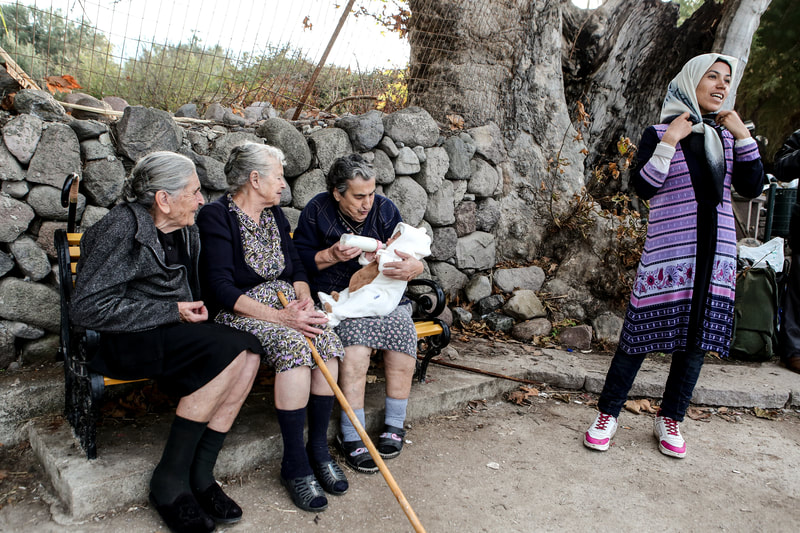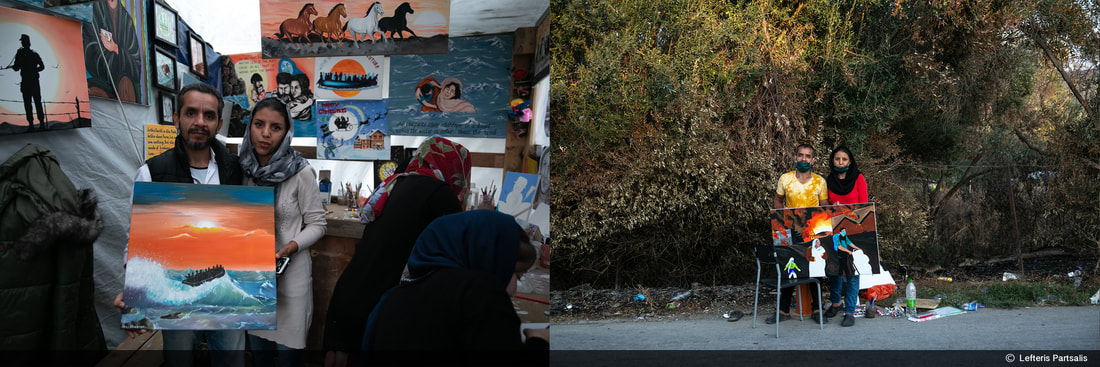LATEST NEWS
from the Balkan photography
by Vicky Markolefa You have been working on the front line of reportage in Greece and beyond for several years. How did you start getting involved with photography? I started working on photography in the last two grades of high school, in an effort to visualize feelings, thoughts, and sounds of my adolescence. Photography was a new world that required knowledge on various levels. With an SLR camera, a photography guide of National Geographic, many walks and even more films, this magical journey had begun. In between 2005 - 2010, the way I perceived the environment around me changed, drastically. The environment of the provincial city of Drama - where I studied - contributed to this, as well as Costas Vidakis (wildlife photographer - Forester), one of the ‘lighthouses’ that illuminated my path with its aesthetics and ethos. After a lot of experience in travel reporting and politics, I came to the independent - social reportage, and now looking back, I can say with certainty that what happened was to conclude that I belong here, where I am. Your work seems to be focusing on social issues such as the economic recession, migration, recently the pandemic. What drives you towards these topics? A crisis, whether economic or refugee or health or environmental, is in itself a ring bell for every photojournalist - there will be intense activity during this situation. You know that you have to take your camera and go out to tell stories, to document the facts through the word of mouth of people from different walks of life, to stay close to the weak, to the one who goes through a phase with difficulty. Usually, the subject chooses us, we do not choose it. A photojournalist records and observes historical moments. I believe this is one of the points that give you the strength to do this job: the historicity of the events. If you do not love that, if you do not have sensibilities, you do not do it.
Beyond reportage, you have a significant body of personal work. How has this part of your photography developed over the years? Are there any new or long-term projects you are working on now? As long as the recording medium is not only used for the act of recording itself, but it is an art tool as well, then the challenges you face are many and continuous. As you study, you improve. You stop seeing the reportage as simple documentation - but at the same time with aesthetic criteria - you are always in a search. Above all, I would say that over the years you become more selective, more strict with yourself. This transition and self-improvement within you - but mainly in your images and photographic style - is a process that takes place very slowly and there are moments with intense insecurities which, I can say with confidence, can be overcome quickly. Mostly, as the years go by, all this grows inside you and you stand on your feet more firmly. So, you stay true to your photographic style, to your view, to the way you see things, to the honest approach you must have to the issues - and people recognize that. I think it is more important to be told that you have a recognizable photographic style than that you are a good photographer. There are some stories that I work on while collecting the material for reportage. The most recent project I did was entitled ‘IN QUARANTINE’ and during which, in the second quarantine we had in Greece, I went out for 6 months for a photograph every day, in different parts of the city. This particular project, from one point onwards, was a bet with myself to keep going until the end. What is your view on the future of reportage, street, and documentary photography in Greece and the Balkan region? The future of reporting is in multimedia. Our cameras show the way. Now, with one click you can record high-resolution videos. Although printing - in one way or another - will never die, if you notice now more and more media are presenting reportages using new technologies and while we once had a photoreportage and a text, now there is the use of audio, graphics and video in addition to all this and on a platform that you can easily navigate by simply scrolling. All this contributes to the easier understanding of the subject that you are presenting. We can’t deny that mobile phones are now everyone's third eye and their image quality is terrific and professionals in the field are called to differentiate by expanding their knowledge. Share a piece of advice for photographers who are interested to improve their skills and get more involved in your line of work? I want to share this: it took me several years to figure out where I belong, what I want to do, what I want to be aligned with. I came to the conclusion that I do not just want to take nice pictures. I'm interested in these images saying something, touching the world, having a story. An often-repeated mistake is that when you first start with photography, people ask what do you want to photograph. There is no answer to this and you realize it when you end up somewhere. Of course, I do other photography work in parallel, yet the standard, the basis of my work is photo reportage. As a photojournalist, you will be called to face historical moments and you will capture images that you can not imagine how they will talk to the world and how far they can reach. You must always approach with respect, seriousness, and honesty. A photojournalist documents the story. He must have his eyes open in all directions. Not for the awards, not for the applause. These are nice too, but they are made for the shelves. You have a mission: to convey an image, to show what is happening where you are. For sure, when you take a picture you know if it is strong or not. However, you never know how far it can reach. This is what happened with my image from the 15 'refugee crisis with the three grandmothers - Emilia Kamvisi, Maritsa Mavrapidou, and Efstratia Mavrapidou - feeding a baby who had just arrived with his parents. The boats those days arrived non-stop at Skala Sykamnias of Lesvos and all eyes were on the sea. I left the obvious behind after covering it for several days and started walking on the sideline, capturing images of volunteers and locals offering help to the exhausted refugees. This image was to become my most famous image to date and one of the most famous in Greece around the refugee topic. I did not expect that. It happened over time. People through social media shared the specific image which spoke differently to everyone. Keep your eyes open for the Human. BIO Lefteris Partsalis is a professional photojournalist and video producer. He covers reportage topics for CNN Greece since 2015. He started his career as a travel photojournalist for Icons Travelers magazine and has worked with the press offices of the Ministries of Foreign Affairs and Defense. In 2012, already immersed in social photo reportage, he covered the events caused by the financial crisis, while in 2015-16, he worked on the refugee crisis in Lesvos, Athens, Idomeni and Evros. In 2017, he covered the last battles of the Iraqi army against the Islamic State in Mosul. He collaborates with the Greek SOOC as an external photojournalist and with the Chinese agency Xinhua. Lefteris has collaborated with the French agency (AFP) the Associated Press, Intime, Kathimerini Kappa Magazine and other print and online publications. He holds a degree in Landscape Architecture from the TEI of Kavala (2010). Instagram: @lefteris_partsalis Facebook: Lefteris Partsalis www.facebook.com/lefteris.partsalis Comments are closed.
|














